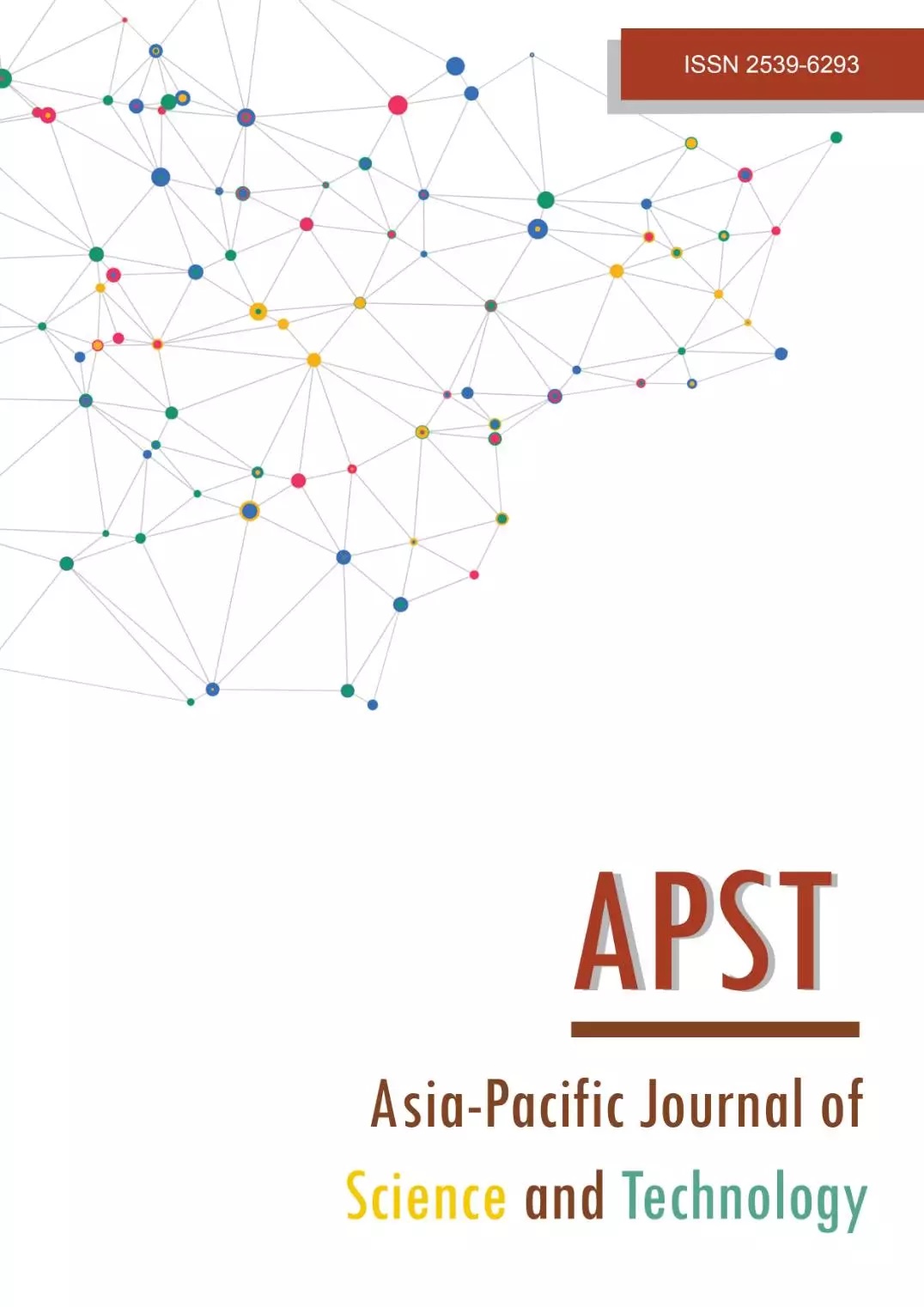Biological properties and active components of Ocimum
Main Article Content
Abstract
Ocimum sanctum Linn. and Ocimum gratissimum Linn. have been used for traditional and ayurvedic purposes for centuries. These aromatic plants have also been recognized as having potential medicinal properties and studied for their anti-inflammatory and anti-bacterial properties. The aims of this study were to prepare ethanol extracts from the leaves of O. sanctum and O. gratissimum and characterize the bioactive components and to determine their cytotoxic effects of on L929 mouse fibroblast cell line. Fresh leaves of the plants were macerated and the extracts were obtained using 95% ethanol. Fourier transmission infra-red spectrum of both herbal extracts were analyzed to identify the functional groups. The intensity peaks were indicative of aliphatic primary amines, aromatic compounds, alkanes, and alkyl halides. Murine fibroblast cells were then treated with 9 different extract concentrations ranging from 60 mg/mL to 0.23 mg/mL, following two-fold dilution. Cell viability was examined by 3-(4,5-dimethylthiazol-2-yl)-2,5-diphenyltetrazolium bromide (MTT) assay for both plant extracts using ISO 10993-5. The results showed that 95% ethanol extracts of Ocimum sanctum and Ocimum gratissimum at the concentrations of ≤0.46 mg/mL had no toxic effects on L929 cell lines.
Article Details

This work is licensed under a Creative Commons Attribution-NonCommercial-NoDerivatives 4.0 International License.
References
Joseph P, Hereman S. Paxton’s botanical dictionary. 12nd ed. London: Bradbury Evans and Co.,;1868.
Pattanayak P, Behera P, Das D, Panda SK. Ocimum sanctum Linn. A reservoir plant for therapeutic applications: an overview. Pharmacogn Rev. 2010;4(7):95-105.
Bhavani T, Mohan RR, Mounica C, Nyamisha J, Krishna AG, Prabhavathi P, et al. Phytochemical screening & antimicrobial activity of Ocimum gratissimum review. J Pharma Phyto. 2019;8(2):76-79.
Prabhu KS, Lobo R, Shirwaikar AA, Shirwaikar A. Ocimum gratissimum: a review of its chemical,
pharmacological and ethnomedicinal properties. Open Complement Med J. 2009;1(1):1-15.
Kaypetch R, Muadcheingka T, Tonput P. Antibacterial activity of Ocimum sanctum oil against Streptococcus mutans: in vitro. M Dent J. 2015;35(3):311-320.
Talabi JY, Makanjuola SA. Proximate, phytochemical, and in vitro antimicrobial properties of dried leaves from Ocimum gratissimum. Prev Nutr Food Sci. 2017;22(3):191-194.
Somashekar S, Saraswati U, Laxminarayana U. Evaluation of antioxidant and wound healing effects of
alcoholic and aqueous extract of Ocimum santum Linn. in rats. Evid Based Complement Alternat Med. 2008;5(1):95-101.
Osuagwu FC, Oladejo OW, Imosemi IO, Adewoyin BA, Aiku A, Ekpo OE, et al. Wound healing activities of methanolic extracts Ocimum gratissimum leaf in Wistar rats - a preliminary study. Afr J Med Med Sci. 2004;33(1):23-26.
Archana D, Singh BK, Dutta J, Dutta PK. Chitosan-PVP-nano silver oxide wound dressing: in vitro and in vivo evaluation. Int J Biol Macromol. 2015;73:49-57.
International Organization for Standardization. ISO 10993-5:2009(E). Biological evaluation of medical devices- part 5. Tests for in vitro cytotoxicity. 3rd ed. Geneva: ISO; 2009.
Zhang QW, Lin LG, Ye WC. Techniques for extraction and isolation of natural products: a comprehensive review. Chin Med. 2018;13(20):1-26.
Manogaran P, Muthukrishnan S. GC-MS and FT-IR analysis of phytocomponents in the methanolic extract of Ocimum sanctum (Tulsi). Int J Res and Analytical Rev. 2019;6(1):1023-1032.
Pratheeba T, Ragavendran C, Natarajan D. Larvicidal, pupicidal and adulticidal potential of Ocimum
gratissimum plant leaf extracts against filariasis inducing vector. Int J Mosquito Res. 2015;2:1-8.
Raju RS, Sakuntala P, Jaleeli KA. FT-IR sectroscopy analysis of Ocimum gratissimum leaves. Int J
Emerging Technologies in Engineering Res. 2017;5(4):131-133.
Wihadmadyatami H, Karnati S, Hening P, Tjahjono Y, Rizal, Maharjanti F, et al. Ethanolic extract Ocimum sanctum Linn. induces an apoptosis in human lung adenocarcinoma (A549) cells. Heliyon. 2019;5(8):02772.
Huang CC, Hwang JM, Tsai JH, Chen JH, Lin H, Lin GJ, et al. Aqueous Ocimum gratissimum extract
induces cell apoptosis in human hepatocellular carcinoma cells. Int J Med Sci. 2020;17(3):338-346.
Ielpo MT, Basile A, Miranda R, Moscatiello V, Nappo C, Sorbo S, et al. Immunopharmacological properties of flavonoids. Fitoterapia. 2000:101-109.
Ozdemir KG, Yilmaz H, Yilmaz S. In vitro evaluation of cytotoxicity of soft lining materials on L929 cells by MTT assay. J Biomed Mater Res B Appl Biomater. 2009;90(1):82-86.
Thonemann B, Schmalz G, Hiller KA, Schweikl H. Responses of L929 mouse fibroblasts, primary and
immortalized bovine dental papilla-derived cell lines to dental resin components. Dent Mater. 2002;18:318-323.


